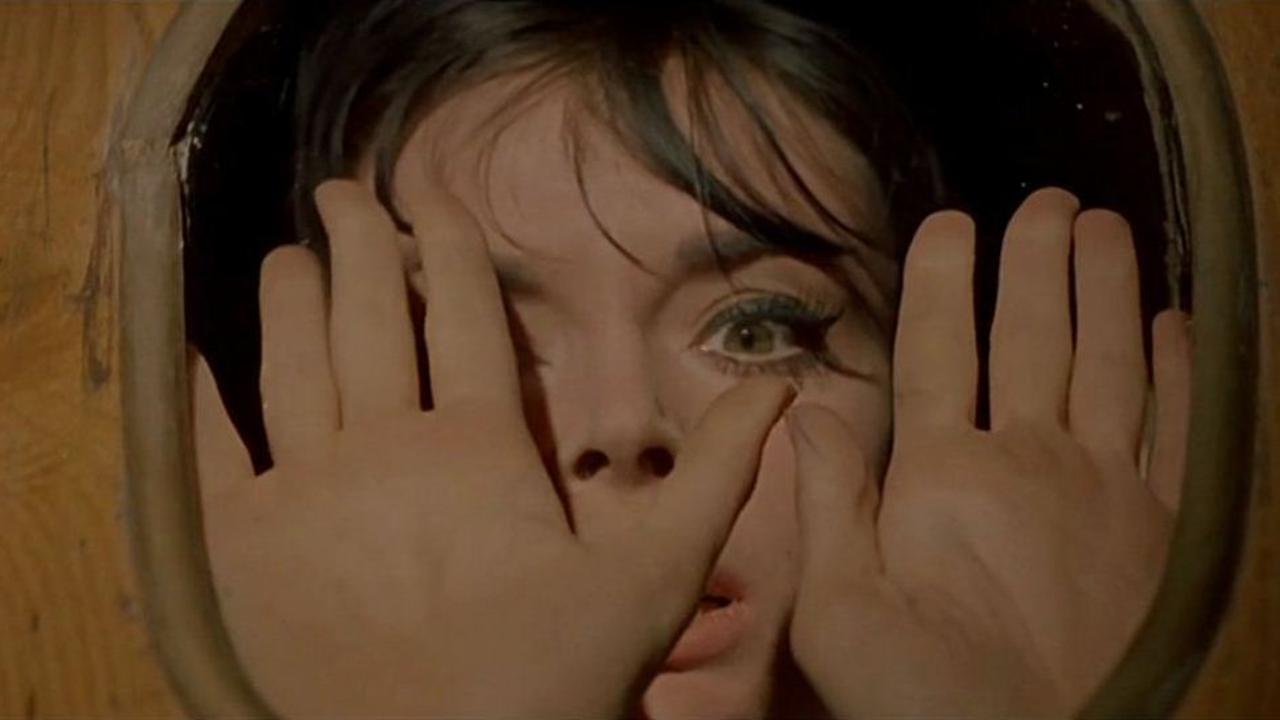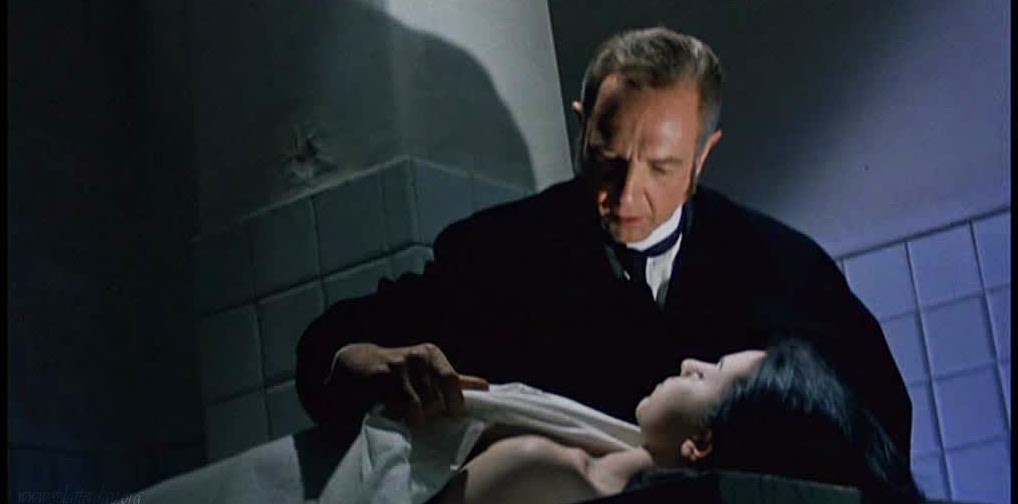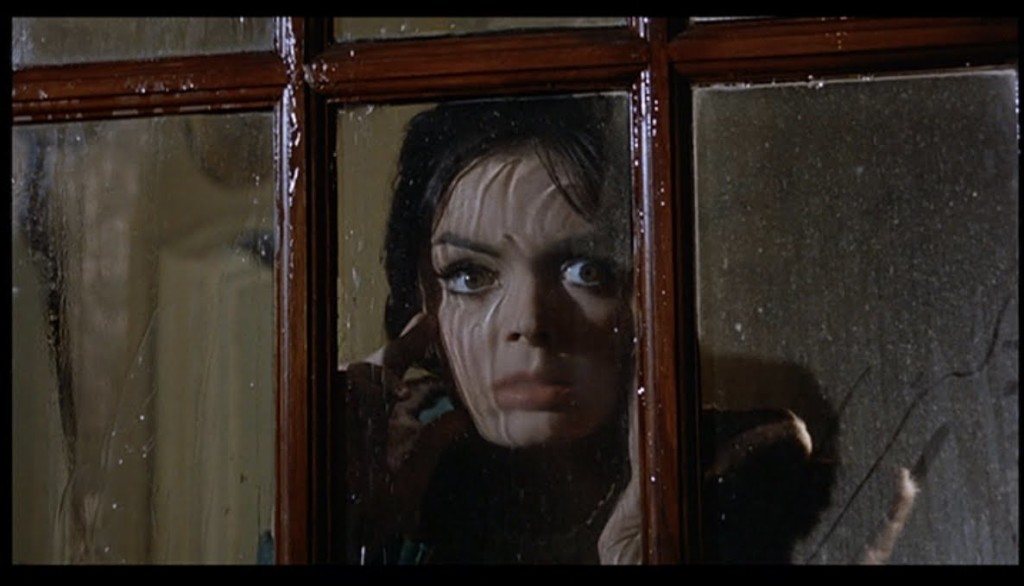31 Days, Day 15: Celebrating Half Way to Halloween with THE HORRIBLE DR. HITCHCOCK
The Horrible Dr. Hitchcock is, to modern eyes, a subtle Italian gothic horror. Released in 1962, it riffs on some taboo themes without ever highlighting them to their full squeamish grandeur.

Bernard Hitchcock (Robert Flemyng) is a doctor of some repute. He lives in a cavernous mansion with his wife, housekeeper, and cat. It’s something of an idealistic life, right? But Dr. Hitchcock has a dark side: sexual attraction to corpses. To that end he’s turned anesthesia into an artform, not just as an aid in his surgeries, but in immobilizing his wife before sex. Even in 2016 anesthesia is tricky, so it’s no surprise when he administers the wrong amount, killing his wife.
In his grief he leaves his house to the care of his housekeeper (Harriet Medin), returning years later with a new wife, Cynthia (Barbara Steele) on arm. Cynthia is innocent to her husband’s proclivities, but quickly becomes uneasy with the clandestine atmosphere of her new house: off-limit rooms, the harsh glare of the housekeeper, and the large portraits of Dr. Hitchcock’s dead wife that dress too many walls.
These portraits are but a visual representation of the shadow the dead wife casts–we get typical haunted house-style effects, things that only Cynthia seems to acknowledge. When she mentions these to her husband, she’s quickly shot down as imagining things. In modern vernacular we’d call his reaction “gaslighting.” Of course, in the 1880s when the film is set (as well as in the 1960s when it was filmed), it would simply be viewed as taking a rational approach to something outside our typical experience.

Dr. Hitchcock isn’t the only man who fails to listen to Cynthia. Over the course of the movie she strikes up a friendship with one of his coworkers, Dr. Kurt Lowe (Silvano Tranquilli). In one key scene Cynthia, convinced that her husband drugged her drink, asks Lowe to test it. He brushes her concerns off as nonsense. The funny thing about rationality is that it’s only useful when the world is rational.
But change some information and that which at first seems irrational suddenly becomes so. Lowe didn’t know about Dr. Hitchcock’s necrophilia; his trying to kill his wife would seem irrational. That’s the key to the gaslighting within The Horrible Dr. Hitchcock; when you discount the perspectives of people with experiences outside your own, you’re operating from a place of ignorance. It’s not that they (and Lowe specifically) needed to believe Cynthia, but there are ways of responding that don’t immediately assume she’s just imagining something. Hell, you can think Dr. Hitchcock would never, ever poison his wife, yet still test the damned drink.
We see this in haunted house movies all the time. Young, happy couple moves into their first house and the wife starts hearing footsteps, finding things where she didn’t leave them, etc. When she brings it up with her husband, he just brushes it off. “It’s nothing,” he says. “You’re just a crazy female with too much time on your hands but at least you’re sexy in bed,” he doesn’t say, but he might as well since it amounts to the same damn thing.
What’s not clear in The Horrible Dr. Hitchcock is how much Cynthia’s husband actually believes about what’s transpiring. He’s held at arm’s length, even during the first part of the film where he’s the main character. It’s possible that he’s gaslighting Cynthia out of an honest, rational disbelief. Or, worse, he’s at least partially aware and it simply serves his interests better for her to be continually doubting reality.

From a narrational perspective, this ambiguity keys into a larger misstep: We’re never sure what Dr. Hitchcock’s end goal is. We have a guy who has kept his sexual preference a secret from his wife. We have a wife who thinks she’s seeing the dead wife roaming the halls of the mansion. These are both important things at the end, but neither gives us motivation during the film to point towards what Dr. Hitchcock is doing. Even knowing the way The Horrible Dr. Hitchcock ends, there are little things along the way that feel out of whack–not in a “red herring” way, just in a sloppy script way.
Luckily, Steele gives a great performance here, as does Flemyng. Flemyng, in particular, gives off a fantastically awful vibe. His character is hard to understand, but he is scary. They singlehandedly allow The Horrible Dr. Hitchcock to be effective even when the script falters.
Even though the necrophilia is implied throughout, its mere suggestion gives The Horrible Dr. Hitchcock an otherworldly glow. Few films tackle the subject in any way, let alone without turning it into a comedic thing. That, paired with Steele and Flemyng’s performance, makes the film notable and worthy of attention.



